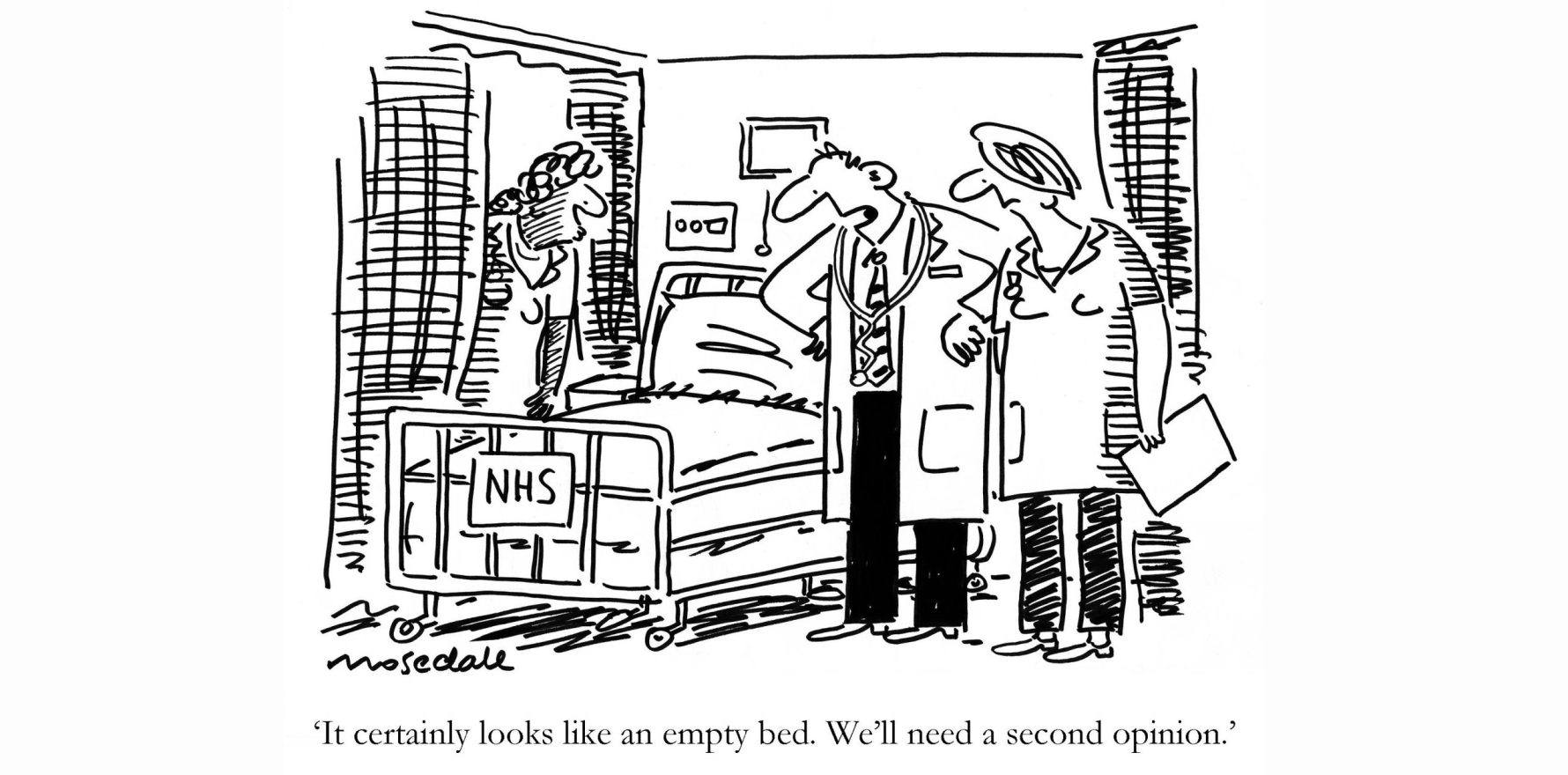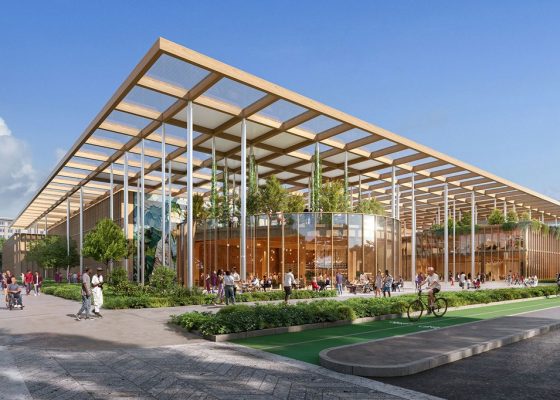Whether we get our act together for the next health funding reform agreement or not there’s a growing coalition of the willing applying new ideas, processes and technology to our hospital problems.
St Vincent’s Hospital in Melbourne recently broke with accepted hospital funding dogma and, in an experiment designed to test better ways to expedite aged care patients through its system, funded a permanent position for a geriatrician in its ED.
The idea was to assess aged care patients as they hit the messy front end of the system properly, take immediate workload off the ED staff if possible, and from the start of an aged care patient journey, get the system journey optimised – for the better of both the patient and the hospital.
What the administrators found was that not only were they taking quite a load off their base ED staff, who were not trained to assess aged care patients quickly, they were often able to redirect a patient to an appropriate out-of-hospital service immediately, avoiding a hospital admission altogether at the start.
And for those that did need hospitalisation, they had an optimised plan for the visit that usually resulted in a shorter stay.
The funding for the geriatrician could not be formally tied to normal activity-based hospital measures, so in that respect it technically wasn’t helping the hospital financially.
But some simple maths soon indicated to the administrators that the idea had significant potential return on investment overall for the hospital, and an increasingly large and complex cohort of its patient intake.
It was a simple idea that St Vincent’s is now looking to evolve: the provider wants to connect some of its out-of-hospital aged care services to the process and provide an even smoother patient journey, one which will not only optimise the experience of the patient, but the bottom line of St Vincent’s portfolio of services, especially its out-of-hospital services.
If such an idea is proven out at some sort of scale, you wonder how much longer the policymakers, and those that determine funding settings for the states, could ignore the idea.
And if they eventually took the idea on, how much such an idea might return to the entire public hospital system if scaled across entire states.
This is just one example of the sort of the innovation and momentum that exists at the coalface in hospitals to override existing, and largely outdated, funding settings.
This particular idea could significantly create system impact at scale.
St Vincent’s chief strategy officer, Dr Rob Marshall told Health Services Daily that if you can prove out ideas like this, “ones that have obvious health system impact”, then “the long view is to find someone who’s willing to pay for it”.
Related
Dr Marshall suggested that while not-for-profits like St Vincent’s, even though they are running some public hospitals, tend to have more scope and balance sheet flexibility to run experiments like the one in Melbourne, but that you’ll see the same sort of ideas testing across the public system as well.
“The states [at a political level] want the total pie to increase as a means of solving a lot of their issues,” said Dr Marshall.
“I don’t think the total of the pie is going to change much. I think we have to ask ourselves, ‘how do we do different things with existing funding that can make a difference’.”
There are plenty more ideas being tested outside a quite constrained funding paradigm, where those at the coalface see obvious opportunity and leadership within a particular hospital network are happy to experiment at the edges, on less than certain ROI, rather than working strictly within the current funding framework.
Dr Marshall will be one of four experts discussing how innovation is literally breaking out across the system despite an outdated funding regime, at the New Models of Care Shaping the Future of Hospitals Summit on 16 October in Sydney.
The same expert panel will feature Sarah McRae, CEO of Amplar HealthHome Hospital; Dr Loren Sher, director of the Victorian Virtual ED; and Bettina McMahon, the CEO of Healthdirect Australia, each of whom has a story to tell about innovation in around the hospital system, which is realising important efficiency gains, often in spite of the current funding rules.
Dr Sher’s experience building out a virtual ED across the Victorian health system is starting to have obvious and meaningful returns and the numbers of patients being treated outside of the bricks-and-mortar infrastructure is increasing day by day.
Ironically, and like the St Vincent’s experience, the funding rules which focus on activity within the bricks-and-mortar hospital don’t provide a lot of incentive to grow Dr Sher’s virtual care model.
Dr Sher will be talking to how the virtual ED idea is growing regardless and why.
Within an increasingly stressed system, the idea has obvious returns regardless.
Now Dr Sher’s group is looking at the expansion of the idea to provide virtual specialist services for in- and outpatient services in some of Victoria’s stressed rural and remote hospital networks.
It’s an obvious idea given that the majority of rural and remote hospitals today either have waiting lists that are unreasonable, or they are spending big on FIFO locums to try to relieve their issues.
And regional and remote patients are having to travel long distances, along with their families with all the additional costs that adds to treatment and a hospital stay.
According to Ms Mcrae the sort of evaluation and scaling of ideas that is starting to occur hasn’t happened a lot in the past.
“When given some autonomy, smart people can find a way like water finds a channel. Some people are starting to do some smart things,” she says.
But in most cases the next critical step is evaluation and scaling.
“That costs money, so it needs creative thinking,” she says, alluding to funding models that so far aren’t talking much to all the creative thinking going on.
The Summit will feature case studies from both public system providers and private providers on innovation and use of technology that is bypassing the core of current funding signals and providing return regardless.
One case study will feature the rapidly growing network of virtual specialists being provided to rural and regional hospitals with long waiting lists, provided by the Telecare service.
Telecare is a fast-growing private provider of services to the system, designed to both provide local specialist services in the regions where none exist, and to provide relief to the regional hospital system.
Other versions of Telecare are popping up – My Emergency Doctor, for example, which provides virtual ED relief around the country – which are obviously providing ROI because hospitals are funding these providers despite the services not fitting into the current funding model.
Another fast-expanding service, already helping a lot of public hospitals, but now set to start helping a lot more across the country is the newly rebranded suite of telehealth triage services from the Healthdirect group, in the guise of 1800 Medicare.
All the above ideas, and innovations making inroads into hospital service efficiency an delivery, despite a funding regime that is yet to be optimised for digital transformation, will be discussed at the upcoming Summit, along with the latest in cloud, AI and virtual care technologies that are being adapted to help hospitals innovate for more efficiency at speed.
If you’d like a ticket you can get a 20% discount on all ticket types HERE.
The full program and speaker line-up is HERE.
If you have any questions, contact greta@healthservicesdaily.com.au.




